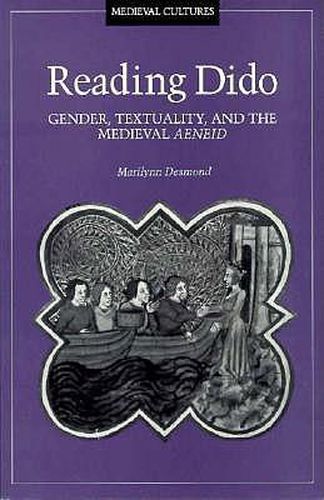Readings Newsletter
Become a Readings Member to make your shopping experience even easier.
Sign in or sign up for free!
You’re not far away from qualifying for FREE standard shipping within Australia
You’ve qualified for FREE standard shipping within Australia
The cart is loading…






If we view the Aeneid - the poem of empire, conquest, and male hierarchy - as the West’s quintessential canonical text and Latin primer, then the history of Virgil readership should tell us much about the concept of education in the West. In this book, Marilynn Desmond reveals how a constructed and mediated tradition of reading Virgil has conditioned various interpretations among readers responding to medieval cultural and literary texts. In particular, she shows how the story of Dido has been marginalized within canonical readings of the Aeneid . Reaching back to the Middle Ages, to vernacular poetic readings of Dido, Desmond recovers an alternative Virgil from historical tradition and provides another paradigm for reading the Aeneid . Desmond follows the figure of Dido as she emerges from ancient historical and literary texts (from Timaeus and Justin to Virgil and Ovid) and circulates in medieval textual cultures. Her study ranges from the pedagogical discourses of Latin textual traditions (including Servius, Augustine, Bernard Silvestris, and John of Salisbury) to the French and English vernacular cultures inscribed in the Roman d'Eneas, the Histoire ancienne jusqu'a Cesar, and the work of Dante, Chaucer, Gavin Douglas, Caxton, and Christine de Pizan. The positions of all these readers point to the cultural specificity and historical contingency of all traditions of reading. Thus, this book demonstrates how medieval traditions of reading Dido offer the modern reader a series of counter-traditions that support feminist, anti-homophobic, and post-colonial interpretive gestures. A new series sponsored by the Center for Medieval Studies at the University of Minnesota. The volumes in this series study the diversity of medieval cultural histories and practices including such interrelated issues as gender, class, and social hierarchies, race and ethnicity, geographical relations, definitions of political space, discourses of authority and dissent, educational institutions, canonical and non-canonical literatures, and technologies of textual and visual literacies.
$9.00 standard shipping within Australia
FREE standard shipping within Australia for orders over $100.00
Express & International shipping calculated at checkout
If we view the Aeneid - the poem of empire, conquest, and male hierarchy - as the West’s quintessential canonical text and Latin primer, then the history of Virgil readership should tell us much about the concept of education in the West. In this book, Marilynn Desmond reveals how a constructed and mediated tradition of reading Virgil has conditioned various interpretations among readers responding to medieval cultural and literary texts. In particular, she shows how the story of Dido has been marginalized within canonical readings of the Aeneid . Reaching back to the Middle Ages, to vernacular poetic readings of Dido, Desmond recovers an alternative Virgil from historical tradition and provides another paradigm for reading the Aeneid . Desmond follows the figure of Dido as she emerges from ancient historical and literary texts (from Timaeus and Justin to Virgil and Ovid) and circulates in medieval textual cultures. Her study ranges from the pedagogical discourses of Latin textual traditions (including Servius, Augustine, Bernard Silvestris, and John of Salisbury) to the French and English vernacular cultures inscribed in the Roman d'Eneas, the Histoire ancienne jusqu'a Cesar, and the work of Dante, Chaucer, Gavin Douglas, Caxton, and Christine de Pizan. The positions of all these readers point to the cultural specificity and historical contingency of all traditions of reading. Thus, this book demonstrates how medieval traditions of reading Dido offer the modern reader a series of counter-traditions that support feminist, anti-homophobic, and post-colonial interpretive gestures. A new series sponsored by the Center for Medieval Studies at the University of Minnesota. The volumes in this series study the diversity of medieval cultural histories and practices including such interrelated issues as gender, class, and social hierarchies, race and ethnicity, geographical relations, definitions of political space, discourses of authority and dissent, educational institutions, canonical and non-canonical literatures, and technologies of textual and visual literacies.